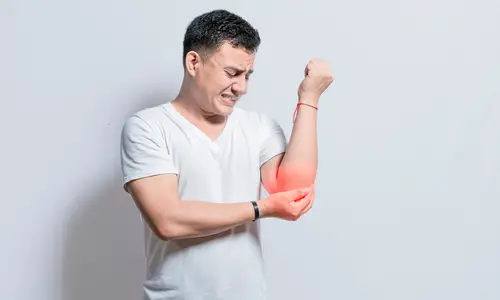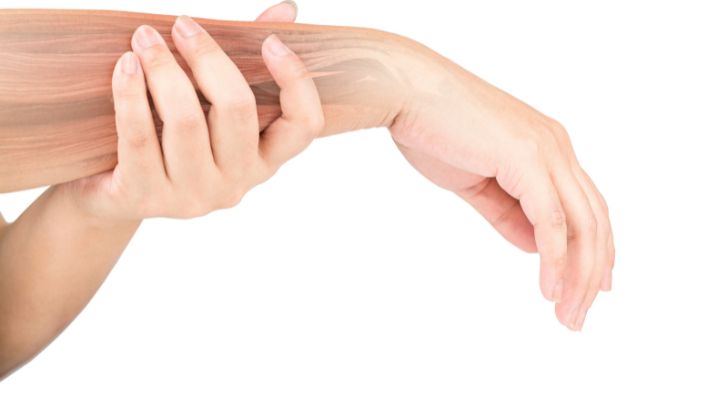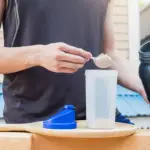After intense workout, you may experience forearm cramps due to the straining of your muscles as you begin to fatigue. Many people suffer from this condition, which can be both painful and frustrating. There are a few possible causes of forearm cramps after doing any exercise. And fortunately, there are several reasons why you might experience forearm cramps after working out. The good news is that these cramps are not dangerous. They are familiar and rarely require medical attention.

What is Forearm Cramps?
Forearm cramps are a common condition that can cause pain and discomfort in the forearm muscles such as during exercise or manual labor. They can be caused by a variety of factors, including overuse of the muscles, dehydration, and electrolyte imbalances.
How to get rid of forearm cramps after workout
The fitness trainers have suggested a few things that you can do to get rid of them:
Method-1: Keep the muscles adequately hydrated

The best way to avoid these painful symptoms is to keep your muscles adequately hydrated. Ideally, you should drink at least half your body weight in ounces of water before and after exercising. You should drink even more if you’re exercising in very hot weather.
Method-2: Performing self-massage
Performing self-massage can help effectively to reduce the pain and inflammation in your forearm. This method can be performed with a foam roller, a massage stick, or a tennis ball. The purpose is to help your arm recover and return to its standard shape. It’s also a great way to loosen up a tight forearm that can cause pain. This is done by applying pressure to the affected areas, such as the forearm, wrist, or hand.
Method-3: Take magnesium supplements
Another way to relieve forearm cramps is to take magnesium supplements. This mineral is known to relax your muscles and reduce muscle spasms. If you’re experiencing frequent muscle cramps, you should see a doctor for further diagnosis. In the meantime, you can try the stretches mentioned above to promote better blood flow.
Method-4: Drink enough water during your workout
Often, dehydration is the culprit. Drinking water during your workout will prevent your body from dehydrating, which will help your muscles contract and relax. This will help prevent cramps and get you back to your routine as quickly as possible. Additionally, stretching before and after exercising is an effective way to relieve muscle pain.
Method-5: Reduce muscle cramps with heat therapy
Another way to relieve the pain and discomfort caused by muscle cramps is to apply heat. While a warm bath will relieve muscle pain, applying heat to the cramped area will help it recover quicker. If heat is not enough to soothe the pain, you can try applying cold to the cramped area. If a warm bath is not an option, you can apply an ice pack to the affected area.
Symptomatic treatment of forearm cramps
Symptomatic treatment of forearm cramps after exercise should focus on alleviating the underlying medical condition. Medications may provide relief but are not always effective and can have unwanted side effects. You should also perform simple exercises before your workout to stretch your muscles. You should also drink plenty of fluids. Sports drinks will help you replace electrolytes lost during exercise.
What should you do if your forearm cramps are caused by muscle fatigue?
You should consult your physician if your forearm cramps are caused by muscle fatigue. It’s important to note that this condition is rare, and not every athlete experiences this problem. Some athletes will experience just one or two episodes during their careers. Others may experience them more frequently and severely. Acute cramps may cause severe pain and even prevent you from training for several days.
When should I see a doctor about cramps?
Various things can cause muscle cramps. If the forearm cramps are severe and frequent after workout, they may be a sign of a serious medical condition. A muscle cramp could be caused by an electrolyte imbalance, improper stretching, or a lack of rest. If you’re not sure, consult your doctor.
Final thoughts
A doctor can prescribe a course of treatment. Some people may require ice packs and other heat therapy to reduce pain. If the pain is severe, a doctor may prescribe an anti-inflammatory drug. Other treatments involve exercise and stretching. Always consult your doctor before trying any new exercise routine. If you think the pain is due to a muscle problem, you can start a program of strengthening exercises and resistance training.





